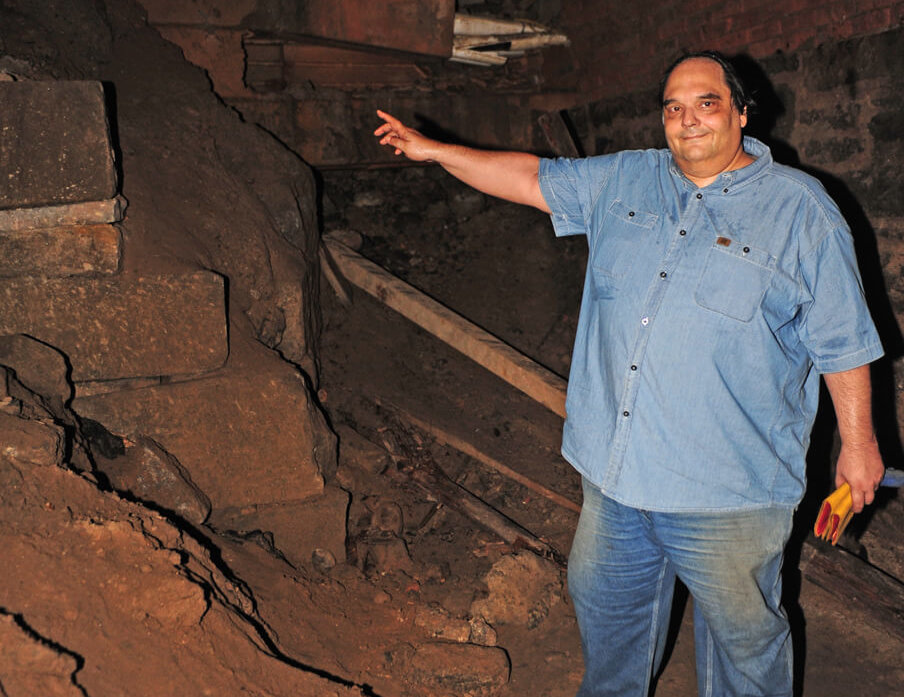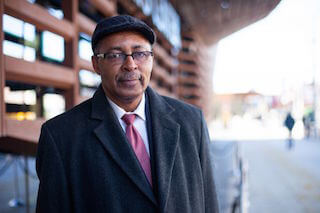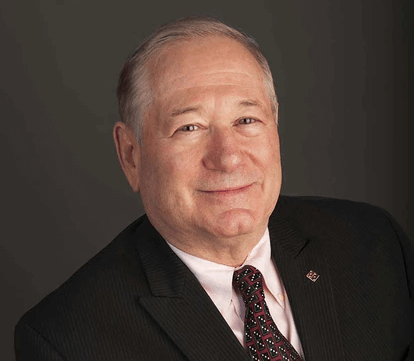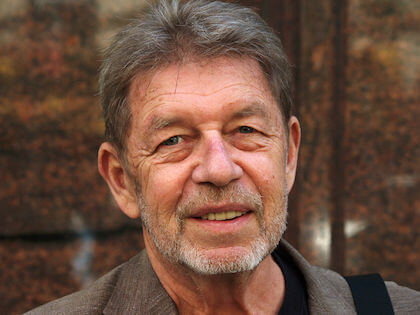Bob Diamond, a passionate transit advocate who rediscovered a long-abandoned rail tunnel under Brooklyn, died on Saturday, Aug. 21 at his home in Flatbush. He was 62 years old.
His death was confirmed by his longtime girlfriend, Sharon Rozsay, who said he had died at home after suffering a stroke while dealing with a bad virus (though not COVID-19).
Diamond was a lifelong Brooklynite who spent the bulk of his life in Flatbush, where he was born, grew up, lived, and passed away.
“He really loved Brooklyn,” Rozsay told Brooklyn Paper. “And he did a lot for Brooklyn, and he always was trying to do something better for Brooklyn.”
Diamond, who headed the Brooklyn Historic Railway Association, was most well known for rediscovering the world’s oldest subway tunnel underneath Atlantic Avenue in Downtown Brooklyn, and leading tours of the subterranean passage for 30 years until the city put a kibosh on his enterprise.
The Atlantic Avenue tunnel had been built by the Long Island Rail Road in 1844 as part of its New York-to-Boston service but was sealed in 1861, after just 17 years in service, when the state banned the use of steam locomotives in Brooklyn’s city limits. Over time, the tunnel was mostly forgotten, and its location was unclear for over a century, with the only indications of its existence being legends of, for example, John Wilkes Booth’s diary being stored in a tunnel under the Brooklyn Academy of Music, and its rumored use as a clandestine bootlegging route by Prohibition-era gangsters.
Diamond was an electrical engineering student at the Pratt Institute when he first heard about the lost tunnel in 1980. Interested in rail, trains, and their history since childhood, then-20-year-old Diamond set out to find the tunnel. His research eventually led him to Brooklyn Borough Hall, where then-Borough President Howard Golden led him on a tour through the building’s archives.
“He found certain information that led directly to the spot where the Atlantic Avenue tunnel was,” Rozsay said. “At that archive at Borough Hall, he found maps and all kinds of information, very old information, of the beginning of Brooklyn.”
Diamond used his findings to pinpoint what he believed to be the tunnel’s location, then in 1981 convinced Con Edison to allow him to go down a manhole on Atlantic Avenue at Court Street.
“He got down there and he had to go on his hands and knees in dirt to get to this spot where there were bricks,” Rozsay said. “He undid the bricks, and he went and got one of those chain ladders and he went down into the tunnel, and then it was discovered.”
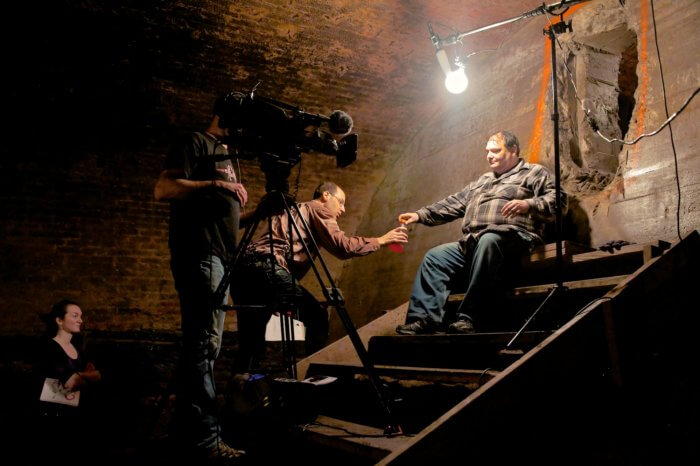
Diamond began offering guided tours of the tunnel soon after its rediscovery, which were a hit despite the tunnel’s only access point being the very manhole in the middle of Atlantic Avenue that he had first descended in 1981. He was supported in his efforts by the city, which renewed his lease to operate the tunnel on several occasions between 1986 and 2008, and provided him grants for his projects.
But Diamond’s fixation remained on something he never got the chance to unearth: an 1830s steam locomotive rumored to be buried behind a thick layer of granite in the tunnel when it was sealed. Diamond spent years trying to uncover the locomotive, and was on the verge of a breakthrough in the late 2000s, when film and TV producers started taking interest. The Brooklynite signed a deal with National Geographic in 2010 making a documentary about the tunnel and the lost locomotive; crucially, Nat Geo would pay for the excavation.
But as the stars seemed to be lining up for Diamond to make his cherished find, the train began to derail. The city yanked Diamond’s permission to use the tunnel in December 2010, and in fact barred any entry into the passageway, citing safety issues raised by the Fire Department regarding the tunnel’s single entrance at the Atlantic Ave manhole and air quality issues.
Later that month, Diamond filed a lawsuit against the city, seeking millions in damages and to have the tunnel reopened. After a protracted legal battle, he lost the suit, with a judge declaring that the city was within its rights to unilaterally revoke the contract.
To make matters worse, in 2011 an engineering firm all but confirmed that the rumored locomotive was indeed buried under Atlantic Avenue, when electromagnetic imaging revealed an enormous metal “anomaly” buried beneath the thoroughfare. But Diamond never got the chance to excavate it.
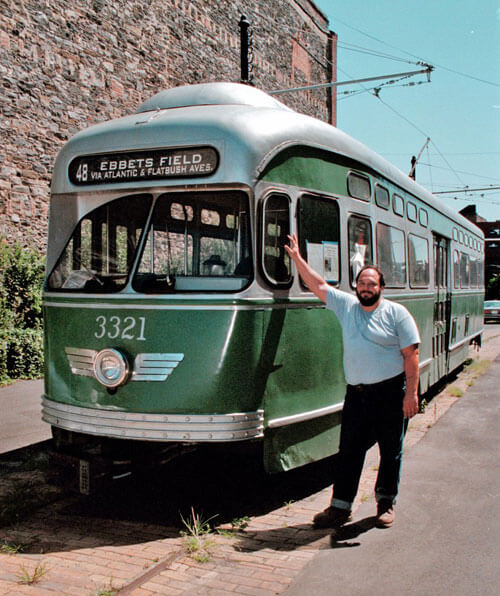
Finding the locomotive wasn’t the only dream of Diamond’s scuttled by the city: for years, he yearned to build a trolley from Red Hook to Downtown Brooklyn, and on numerous occasions was nearly in the position to actually do so. In the 90s, he received both city permission and funding to pursue the streetcar project, going so far as to purchase vintage trolleys and start to lay down track in Red Hook. But the city eventually cut off funding and, in 2003, revoked Diamond’s contract to construct and run the trolley. The city later ripped up the tracks that Diamond had laid down, and the trolleys were trucked away to Connecticut.
The dream came alive again when in 2009 the Bloomberg administration expressed interest in restarting the project, but then came crashing down when the city decided the project would be too costly and not serve enough riders.
Most recently, Diamond worked as a consultant on the Brooklyn-Queens Connector (BQX) project, a favorite of Mayor Bill de Blasio which nonetheless faced similar criticisms as Diamond’s earlier streetcar dreams. His work included drawing maps, devising potential routes, and determining what roads might be able to support a streetcar. The BQX was about to enter the city’s public review process, and Diamond was attending most public meetings on the project, when COVID-19 hit the city and scuttled the project. Last year, the mayor said that the future of the BQX would be up to his successor.
Legal bills and the loss of income from the tunnel tours left Diamond depressed and nearly broke at the end of his life, but he still found time to do consulting work on various projects, and he was a well-regarded transit expert sought by engineers all over the world, Rozsay said.
“They were emailing him from Australia, from Europe, from Canada, from all over,” Rozsay said. “He was known all over the world.”
He also lent his expertise to local transit advocates, such as those advocating for a new subway line along an abandoned 3.5 mile stretch of rail in Queens called the QueensLink. Rick Horan, an advocate for QueensLink and a friend of Diamond, called him “sort of an urban legend in the rail world,” with immense hands-on knowledge of both rail infrastructure and city politics.
“He could be the subject of a book or a movie,” Horan told Brooklyn Paper. “He led a fascinating life with a lot of twists and turns and characters along the way.”
Diamond was also an inventor: when he was 18, he went to Washington to present a concept for a satellite that beams electricity down to Earth to power cities, an idea the US Military is currently testing. Rozsay says she hopes he can get credit for the concept.
Rozsay also said that Diamond invented an innovative, more efficient way to electrically power trolleys, involving small power packs being placed along the route instead of all power being supplied from one giant building.
“He has a tremendous legacy,” Rozsay said. “He was a very smart guy, he put a lot of effort into doing things and getting things done.”
Diamond was also a fighter, as evidenced by his legal battle with the city and others, including his former collaborators Nat Geo, and was skilled in navigating bureaucracy, though that was more out of circumstance than desire.
“If you’re not willing to [fight power], then you can’t be a rail advocate,” Horan said. “That’s what it’s all about. It’s part of public infrastructure, and unfortunately you have to get down in the weeds with the public officials who control that. So I don’t think that’s something he particularly liked to do, it’s something he had to do. That was his least favorite part of being a trolley advocate, the bulls–t, the bureaucracy, the backroom dealings and backstabbings.”
A funeral service will be held next week at Beth Moses Cemetery in Farmingdale on Long Island, Rozsay said. He is survived by Rozsay, with whom he was in a relationship for 25 years.
Update 8/25/21: The Brooklyn Historic Railway Association posted the following message on their website Tuesday night.
We regrettfully announce that Robert Diamond has passed away. RIP Bob. Donations to cover his funeral expenses are needed and appreciated. The outdoor funeral will be held next week. Checks can be made out to Sherman’s Funeral Chapel and mailed to us at 599 E. 7th St., Suite 5A, Brooklyn, N.Y. 11218.


